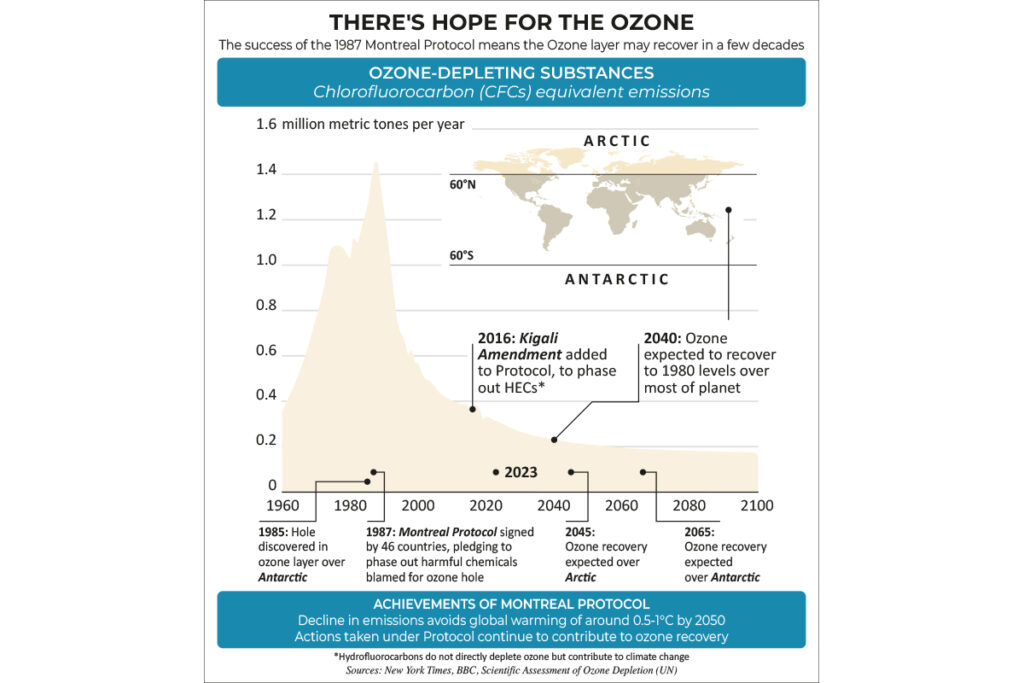As market conditions and the industry evolves, the future of HVAC remains positive, with innovation and strategic planning guiding the way
For decades since its invention in 1902 by Dr. Willis Haviland Carrier, the Heating, Ventilation and Air Conditioning (HVAC) Industry has enabled global commerce, saved lives, preserved food, and kept people comfortable. Equally, the industry caused depletion of our protective ozone layer, contributed to global warming and increased the Carbon footprint overall.
Contributing to the greater good and doing so in a sustainable manner is a challenge, but one that can be addressed by advancement in technology, creation of new business models, and working together to preserve the global common – the environment.
Early starts
To its credit, the cooling industry acted early. Global goals were taken on to reduce production and use of the ozone-depleting HCFCs (Hydrofluorocarbons) under the successful Montreal Protocol in 1987. This was done in an equitable and practical manner by the nations that got together. A recent assessment by 230 scientists from 30 countries have established that the release of two significant ozone depleting chemicals has reduced between 11.5% and 14.5% between 1993 and 2020.
The Kigali Amendment in 2016 has slated in similar global phasing-out targets for HFCs, the successor to HCFCs, due to its Global Warming Potential (GWP).

The efficiency game
Variable Speed Compressors, Variable Refrigerant Volume based systems, smart and adaptive technologies, use of controls and advancement in heat transfer technologies have all lead to energy efficiency levels improving by upwards of 50% over the past decade. On the residential air conditioning side, “Star rating” of products has encouraged the manufacturers to bring out more efficient products while creating a consciousness of sustainability among consumers.
But these measures will be tested for scale as the projected demand for HVAC multiples by many times in the coming 2 decades – with economic development, population growth and general improvement in standards of living. Just in 2025, the Room Air Conditioner market in India is expected to be about double the size it was in 2020.

Innovation imperatives for future
Sustainability, commercial viability and efficiency are unwilling friends that need innovations in:
- Architectural design – minimising waste
- Product technology – improving efficiency
- Business Models – approaching wholesomely
Architectural design:
Less heat-inviting façade designs, greater emphasis on ventilation, use of better building materials, and passive cooling techniques should be actively pursued and rendered commercially viable. Bringing in technology to more accurately sense and control the wasted cooling in unoccupied spaces as a de-facto standard will lead to great reduction in generation of cooling in the first place. According to some studies, energy usage (and hence Carbon emissions) by the built environment contributes to about 17.5% of the overall emissions and much of this is from HVAC, largely derived from the fundamental architectural and engineering design.
Product technology:
While incremental improvements continue to happen in compression, heat transfer, and controls technologies to improve efficiency and thereby reduce CO2 footprint, real and impactful innovations have to happen in two broad areas:
- Refrigerants: Use of natural (CO2, Ammonia) and alternative low GWP refrigerants such as low GWP HFCs, Hydrocarbon based refrigerants like Propane (R290) or Isobutane (R600) or HFOs with low Global Warming Potential will make a big difference to the sustainability imperative. The challenge will always be overcoming the undesirable qualities such as flammability, toxicity, etc. of these alternatives to a commercially viable solution for the industry. The industry in India is united in actively researching these alternative refrigerants from a near-term, medium-term and long-term time horizons.
- Renewable Energy: The industry should design systems and products that can leverage alternative energy sources such as solar, wind, hydrogen, etc., as they become an easier go-to energy source.
Business Models:
The cooling industry will never attain its full potential of sustainability if there is no intervention in terms of business models that can pull together all constituent technologies towards a delivered level of efficiency and sustainability. Working in silos won’t work.
There is good news on this front though. What started off as ‘shared-savings’ model is quickly giving rise to a “Cooling as a Service” business model that removes the entire burden of design, procurement, installation, commissioning, operating, and maintaining large HVAC systems from the building owner and just delivers cooling on a simple pay-per-use basis. This model ensures congruence of multiple objectives.
Cooling is imperative for world economies and its people. But sustainability is imperative for the world to exist. And therein lies the dilemma to be resolved, one that will impact us all for generations to come.
G. Raghavan is a seasoned multi-sector and global corporate executive with over 40 years’ experience across Indian and global organisations such as Voltas, Madras Cements, Carrier Corporation, Ingram Micro, NIIT and Bhartiya Urban.
He is currently the India MD of Kaer, a Singapore based ‘Cooling as a Service’ company. Prior to this, he has held Chief Executive roles for the past 20 years, including as President & Executive Director of Carrier Aircon, Managing Director of Ingram Micro, Chief Executive of NIIT’s global career building training business and CEO of Bhartiya Urban.
Raghavan is the co-founder of a management consulting firm, NxtPractice Growth Partners, and is a Certified Independent Director who serves on the Boards of Amrutanjan Healthcare and Blue Circl. He actively supports Sparsha, a Bangalore-based NGO engaged in caring for helpless children across Karnataka. Besides being a golfer, Raghavan has been an active marathoner for the past 7 years and considers running thrice a week as a route to fun and fitness.


